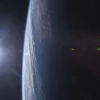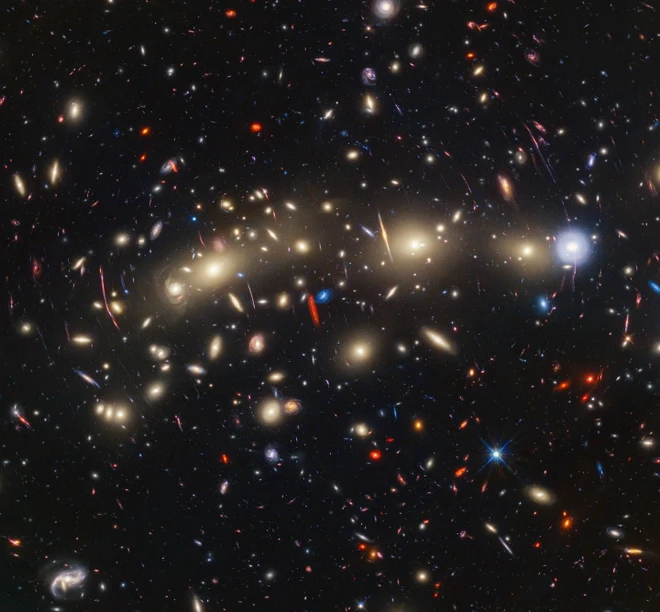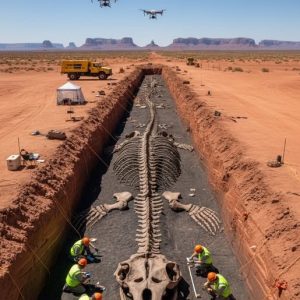For researchers searching for extraterrestrial intelligence, the Copernican principle and the theory of Large Numbers reinforce the hypothesis that aliens are definitely out there somewhere.

Fascination with the concept of extraterrestrials is not new, but it has increased dramatically in the 21st century. Military pilots have reported seeing unidentified flying objects (UFOs) while the Pentagon established an office dedicated to looking into UFO sightings.
The US Congress also held hearings on the issue. Even NASA got involved in identifying UFOs – now renamed unidentified anomalies (UAPs).
For researchers searching for extraterrestrial intelligence (SETI), the hypothesis of alien existence is fundamental. Nestled in the remote mountain town of Green Bank, the National Radio Astronomy Observatory serves as one of the most ambitious SETI projects, hoping to pick up alien signals from the vastness of the universe.
According to scientists, humans have only explored a very small part of the galaxy. The lack of evidence is not evidence to confirm the non-existence of extraterrestrial civilizations.
Aliens may not consider radio waves a useful means of communication. They may also be too shy or our current technology is not yet capable of detecting them.
Physicist Paul Davies compares SETI to looking for a needle in a haystack without knowing whether the needle is actually there.
UAP and the Alien Haunting
The universe is vast and ancient, and it is highly likely that extraterrestrial civilizations have developed. In an age of technological revolutions, including computers and rockets, it seems that humans have mastered space travel and space exploration. So why is there no convincing scientific evidence that aliens have visited Earth?
Perhaps the simplest explanation for this paradox is that there is no paradox at all: They are here!
The idea that mysterious things seen in the sky are alien spacecraft has proven compelling. Recently, the issue has received bipartisan attention in the United States.

The US House of Representatives convened a high-profile hearing in July, at which a former Air Force intelligence officer testified that the US possesses not only crashed spacecraft of “non-human” origin but also biological evidence of aliens.
In September, a journalist in Mexico attracted attention when he displayed to the Mexican Congress what he claimed were the thousands-year-old mummies of two three-fingered aliens.
The scientific community considers the recent UAP craze a cultural phenomenon, not an astrobiological one, as no verifiable information has been presented.
The Mathematical Basis for Why Earth Is Not the Only Place with Life
For SETI experts, two scientifically sound arguments support the hypothesis that aliens are definitely out there somewhere: Large numbers and the Copernican principle.
The Big Numbers argument notes that our galaxy, the Milky Way, has about 400 billion stars and is just one of billions of untold galaxies in the infinite universe. Furthermore, in the past 30 years, astronomers have discovered that planets of all shapes and sizes are common in the universe.

NASA officially joins the UFO search race
Even the most skeptical would have to admit that it’s hard to crunch the numbers in a 13.8 billion year old universe where there is only one species that is self-aware, technologically advanced, and able to build telescopes.
Meanwhile, the Copernican Principle was inspired by the 16th-century astronomer Copernicus, who formulated a revolutionary model of heliocentrism that contrasted with the prevailing geocentric view of the time.

This principle suggests that just as the Earth does not occupy a privileged position in the universe, humans should not consider themselves special or unique. The universe does not revolve around us, and what has happened on this planet over the past 4 billion years could have happened elsewhere.
The discovery of exoplanets has brought renewed optimism about the possibility of an Earth twin somewhere in the universe. “I really think that Earth is not the only place that has life, even if it’s just bacterial or microbial life,” said NASA astrophysicist Knicole Colón. “I would be shocked if we were the only intelligent civilization out there.”
But the evolution of complex life is still a mystery. Emily Mitchell, a paleontologist at the University of Cambridge, points out that although there is fossil evidence of life on Earth going back at least 3.5 billion years, large multicellular organisms did not appear until about 600 million years ago. It took about 3 billion years for life on Earth to learn to crawl.
“I think there’s a huge difference between being able to find life elsewhere and being able to find evidence of intelligent life and the ability to communicate with it,” Mitchell said./.










